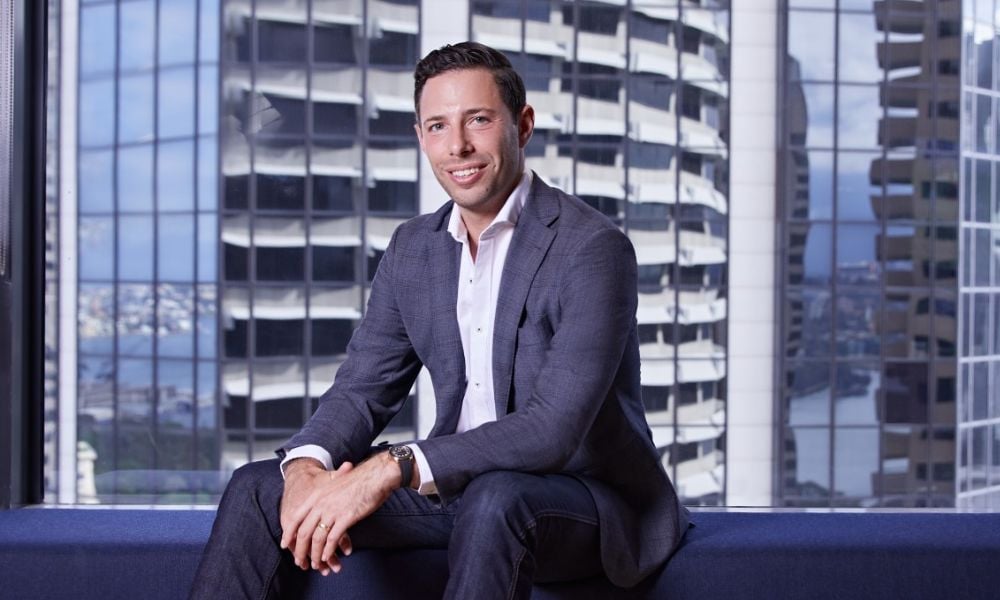Younger generation and those earning average wages most affected

The number of mortgage holders paying a “loyalty tax” by staying with their current lender reflects a year of sustained mortgage strain for both current and prospective Australian homeowners, according to the Lendi Group 2023 Home Loan Report.
The report, aggregating data from Lendi, Aussie, and Domain Home Loans and spanning January to the end of November, paints a concerning picture of the lived experience in the Australian property market in 2023 and underscores the tangible effects of sustained economic pressure on households.
Income challenges and mortgage pressures
Throughout 2023, the median income for borrowers dropped by 3% to $95,000, while variable mortgage rates for owner-occupiers surged by 40%, translating to an additional $528 per month on a $500,000 variable, principal, and interest loan.
David Hyman (pictured above), Lendi Group’s co-founder and CEO, noted that this higher rate environment poses significant affordability challenges, especially for the younger generation and those earning average wages.
“The data shows Australians have met unprecedented headwinds in their fight for the Aussie dream, an environment not seen for the past 12 years, yet they are not giving up on the prospect of homeownership,” Hyman said.
“The data tells of income stagnation coupled with rising costs, but it is all compounded by a loyalty tax to existing borrowers not making a lender switch. This is why it is crucial for homeowners to challenge the status quo and reclaim their agency, to ensure they are getting the best deal in a difficult market.”
Affordability challenges for different demographics
Analysis of all loan applications indicated that the average age of single borrowers was 41, and for couples, it was 40. This, Hyman said, showed the difficulty for the younger generation and those with lower incomes to enter Australia's property market under current conditions.
Only 20% of all home loan applicants in 2023 were single, earning a median income of $109,000 per year.
“This suggests you either need a dual-income household or earn well above the Australian average wage to be able to afford a home loan, which locks out a considerable portion of the nation’s population,” Hyman said.
First-home buyers are particularly affected, experiencing a 12% decrease in home loan applications in 2023. They now represent only 35% of all loan activity, a significant decline from 2022.
“But despite these barriers to entry, new purchases are up 6%, even if affordability on what people can buy is down,” Hyman said. “This shows Australians are willing to give up on a lot of other things before they give up on the dream of homeownership.”
Persistent challenges for existing homeowners
The Home Loan Report also sheds light on ongoing challenges for existing homeowners, with declining equity and a 2% fall in the average purchase value for new purchases across the nation in 2023.
In 2022, 51% of Australian borrowers who refinanced owned more than 60% of their property; however, by 2023, this figure declined to 45%, indicating that a growing number of Australians now own a smaller share of their homes.
“Seeing the amount of equity retreating in 2023 is disheartening,” Hyman said. “As brokers, we know equity is a powerful asset which not only provides homeowners a safety net and the ability to decrease mortgage payments but can be used to fund renovations and for parents, support their children to get their own foot into the housing market.”
There has also been a decline in the number of people opting for refinancing, even though there was a notable increase in homeowners transitioning from fixed-rate home loans. This trend indicates a heightened level of apathy among homeowners.
“Our message to these property owners is that there is still competition in the market and deals to be had, evidenced by the increasing number of borrowers switching to non-major banks,” Hyman said.
Another difficulty, he said, is the lender loyalty tax.
“Right now, existing borrowers are on average being charged rates 29 basis points higher than new borrowers,” Hyman said. “Twenty-nine basis points might not sound like life changing money, but refinancing and saving this can counteract an entire rate increase.”
Positive outlook and broker engagement
Despite the challenges faced by current and prospective homeowners in 2023, Lendi Group remains optimistic that market difficulties can be met, and that regular Australians can achieve homeownership, challenging institutions to improve, especially with the guidance of a dedicated expert.
“Every rate increase in 2023 has led to more conversations between our brokers and people that have woken up to the difficulties of the current market,” Hyman said. “Now 71% of all mortgages in the market are facilitated by a broker, and everyday our teams are helping borrowers make decisive moves to either crack into the market or get a better deal and save on their household’s bottom line.
“While we don’t expect the challenging conditions of 2023 to vanish in 2024, our mortgage brokers expect to use every tool they have in the year ahead to equip borrowers to navigate these hard times and continue to create wealth through homeownership.”
Get the hottest and freshest mortgage news delivered right into your inbox. Subscribe now to our FREE daily newsletter.



